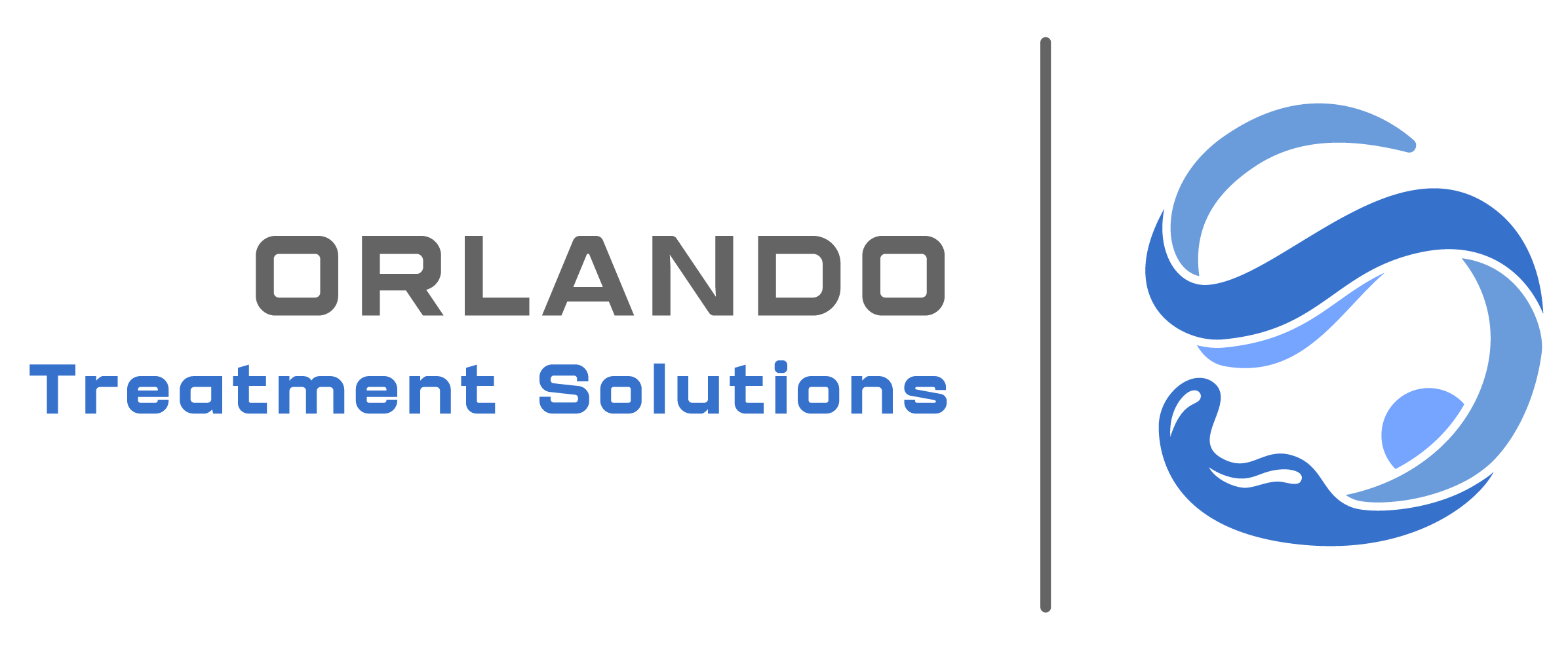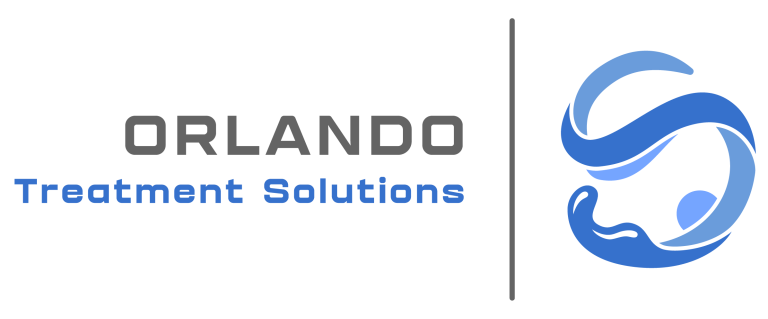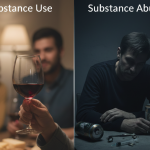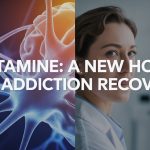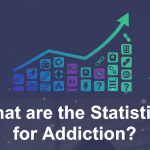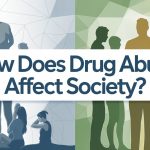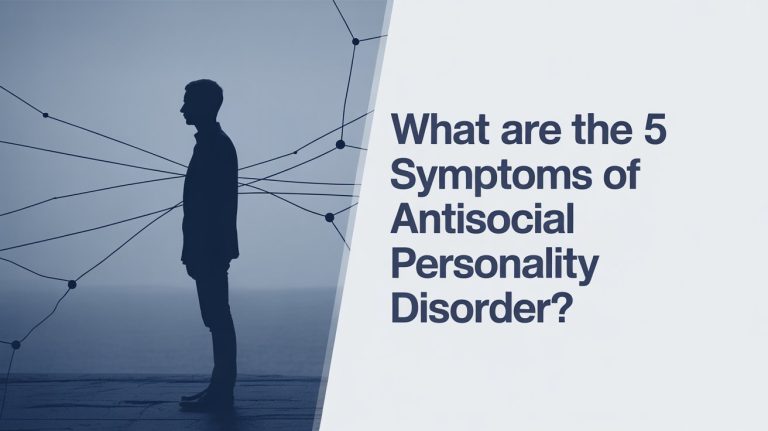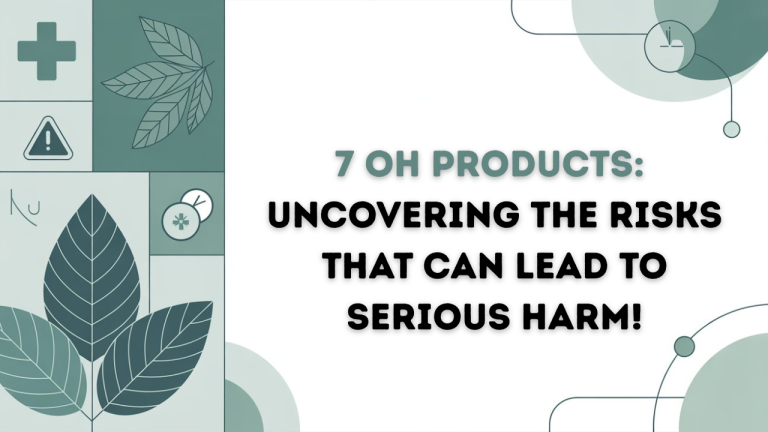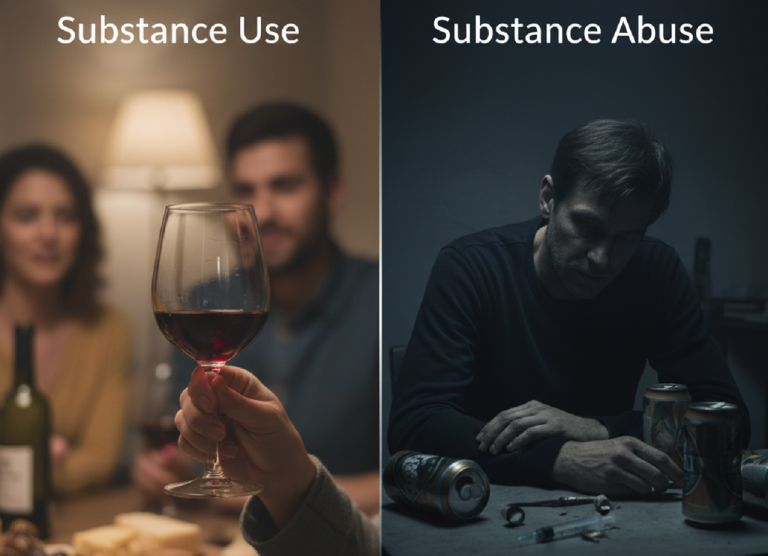In This Blog
- Discover how visuals and data help explain the growing link between addiction and depression.
- What depression and addiction data reveal through graphs and charts.
- Key CDC substance abuse statistics for 2023–2025.
- How to interpret patterns of drug, alcohol, and behavioral addictions.
- Why visuals make understanding mental health more effective.
- Expert advice, prevention insights, and recovery support options.
Introduction
Visual information could be regarded as one of the most effective approaches to viewing the secrets of mental health and addiction. The numbers are just presented in the form of charts and graphs that assist in coming up with the stories, i.e., increasing trends, population at risk, and effects of treatment.
The latest statistics given by the CDC and the National Institute on Drug Abuse (NIDA) are the manifestation of the prevailing side of interdependence in the areas of relations between mental health and drug consumption. The findings of the research also show that over 30 percent of the depressed are addicted to something. These images will help the medical workers and the individuals to be informed of the risk factors at early stages of their development and work toward redemption when the issue gets out of control.
100% Confidential Support is Available 24/7
No matter what you’re going through, you’re not alone. Our dedicated team is here to provide a safe, judgment-free space where you can talk openly and honestly. Whether you need emotional support, resources, or just someone to listen.
We’re here for you—completely confidential and always respectful of your privacy. Call us today!
Depression Graphs and Charts
Visual data is one of the most appropriate perceptions of the concealed truth about mental health and addiction. Only the numbers are depicted in the charts and graphs to help discover the stories that contain increasing trends, high-risk populations, and treatment effects.
The latest statistics, both from the CDC and the National Institute on Drug Abuse (NIDA) reveal the elevated levels of associated mental issues and the consumption of substances. The research also indicates that more than 30 percent of the depressed are addicted to something.
These pictures will assist the healthcare professionals and the people to know risk factors at their initial stages of occurrence and seek help before the matter becomes uncontrollable.
Orlando Treatment Solutions
Battling with Drug and Alcohol Addition? Remember, you are not alone and we are here to help you!
Chart on Drug Abuse
The most common types of charts in presenting drug abuse today are characterized by the drug utilization in terms of the substance, opioids, stimulants, marijuana, and prescription drugs.
A 2024 CDC dataset shows:
- The number of overdose deaths with opioids increased by 14 percent in 2022-2024.
- Adults who smoke marijuana have risen by 9 percent due to the eased restrictions during the pandemic.
- Methamphetamine, which is the main stimulant abused, is growing in the southern and midwestern states of the U.S.
The graphic charts can explain such trends and help the scientists in deciding which age group or area requires immediate action. The visual depiction of the figures may also render the problem tangible at times, otherwise.
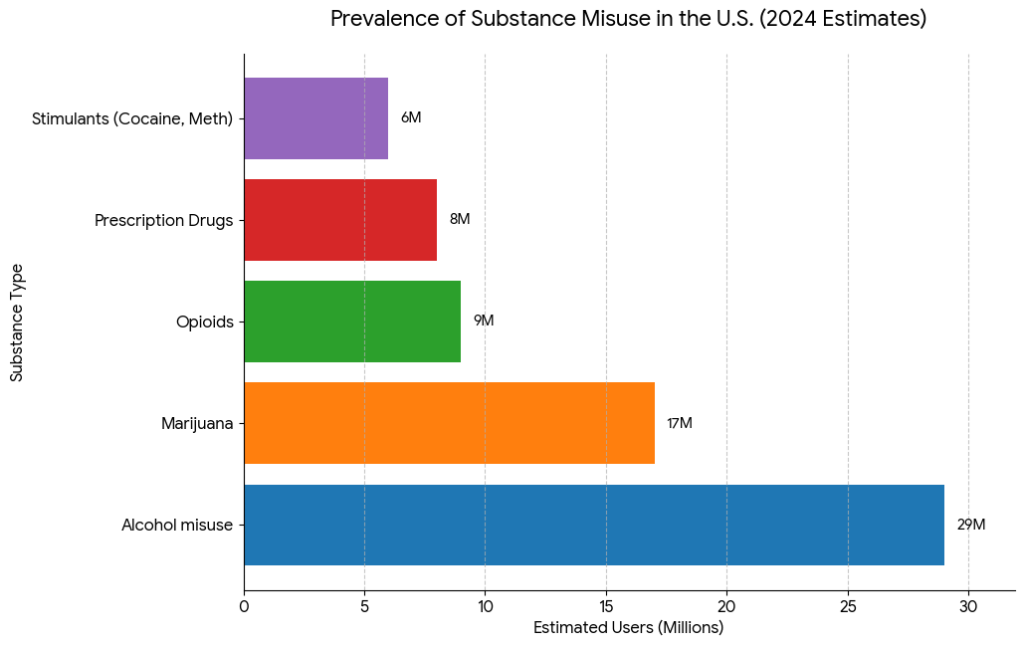
Substance | Estimated Users (Millions, 2024) |
Alcohol misuse | 29 |
Marijuana | 17 |
Opioids | 9 |
Stimulants (Cocaine, Meth) | 6 |
Prescription Drugs | 8 |
Bar chart comparing the prevalence of different substance types in the U.S., based on the CDC’s 2024 Substance Use Report.
CDC Substance Abuse Statistics
As per the 2023-2025 Mental Health and Substance Use Report issued by the CDC:
- In 2024, there were approximately 61 million illicit drug users in America.
- More than 29 million cases of dependence on or misuse of alcohol were reported.
- Approximately 45 percent of individuals who develop substance use disorders have a co-occurring mental health problem.
The graphs and charts that can be drawn when these numbers are transferred to stacked bar and donut charts can help to see how the addiction and depression intersect each other, and the necessity of developing a set of models that would treat the two problems as a complex one.
Why Visual Data Matters in Mental Health
Vision will also enhance the perception of the intricate study, and the emotional issues will be addressed with less difficulty. Not only do they make people look at trends, but read about them.
- It will be capable of increasing the rate of antidepressant prescriptions in a time series chart.
- The scatter plot may be associated with the high level of unemployment and excessive scores on depression.
- The correlation between drinking and the risk of suicide could be introduced in the form of a correlation curve.
These tools provide information and empowerment that can help communities, families, and policymakers to visualize change and take action using data.
Depression and Addiction
The other issue that could be observed during the data visualization process is the mutually stimulating response between depression and addiction. This is because depression can trigger self-medication by individuals through the use of drugs, and addiction enhances depressive symptoms.
Current NIMH statistics show that the cases of dual diagnosis (depression and addiction) have increased by 11% since 2022, which is important in the context of early interventions and dual attention.
These elements are likely to reflect the line charts because when the depth of depression is flying high, the level of substance abuse also follows suit within a couple of months. These observations indicate the degree of interconnectedness between mental and behavioral health.
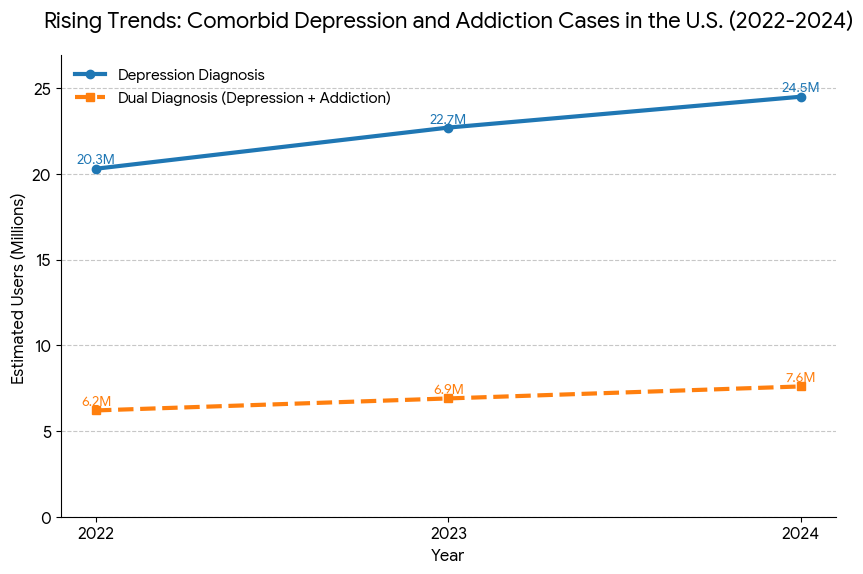
Interpreting Trends in Addiction and Depression
The charts on the area of addiction and depression have to be considered with references to the following:
Age spread – The gaming and stimulant rates are more common among young adults.
Gender inequality – Women are more likely to suffer depression; men more exposed to substance abuse
States in which individuals have less access to mental health services – More overdose rates are found in those states.
Recovery outcomes – It will be more likely that the visuals will highlight the rate of success that is on the rise in the behavioral therapy and support programs.
The very fact that these findings could be received can be implemented into such fields as the definition of the vulnerable population and the efficiency of the prevention programs.
100% Confidential Support is Available 24/7
No matter what you’re going through, you’re not alone. Our dedicated team is here to provide a safe, judgment-free space where you can talk openly and honestly. Whether you need emotional support, resources, or just someone to listen.
We’re here for you—completely confidential and always respectful of your privacy. Call us today!
Signs of Overdose and Prevention Charts
The visuals on overdose prevention are frequently a part of the public health campaign to save lives.
Infographics may include:
Slow breathing, the feeling of being lost, or being unaware are the first ones.
Emergency interventions such as the use of naloxone and a 911 call.
The community-based interventions of the free overdose kits and the harm-reduction materials.
The demonstration of these steps will open the eyes of more individuals and cause a reaction to a crisis

How Visualization Supports Recovery
Graphical tracking systems, such as progress or mood tracking software, may assist an individual to visualize what they have been able to accomplish so far. Pie charts and bar graphs of therapy attendance or reduced cravings can serve as motivation to patients and give the therapists objective milestones.
Visualization as a physical action is a form of therapy in its own right, as it makes people committed to their own recovery.
Expert’s Advice: “Visual data gives mental health professionals the power to connect facts with feelings. When people see their progress, recovery becomes more real.”
— Dr. Lisa Boyd, Clinical Psychologist, American Psychological Association (APA, 2024).
Drug Abuse Treatment & Prevention
The growing popularity of the therapy, detox, and community-based support programs can be proven by the creation of the visual representation of the treatment plans with the help of the data dashboards.
Key points include:
- Early intervention decreases the risk of relapse by a quarter.
- The processes are monitored graphically, which enhances the adherence of treatment.
- The long-term advantages are medical therapy.
Evidence-based therapy, counseling, and holistic care are integrated in programs such as the Orlando Treatment Solutions to have a long-term recovery.
Visualize your recovery journey with personalized therapy at Orlando Treatment Solutions. Call (321) 415-3213 today.
Orlando Treatment Solutions
Battling with Drug and Alcohol Addition? Remember, you are not alone and we are here to help you!
Key Takeaways
Charts and graphs are more intuitive in terms of mental health and addiction.
- The graphics provided by CDC and NIDA demonstrate that there is a strong connection between depression and substance abuse.
- The data is presented in ways that are utilized to forecast patterns according to the criteria of age, gender, and location to solve the problem of planning improved prevention.
- Addiction and depression are normally comorbidities and should be treated.
- Data visualization can be used to motivate patients and enhance the monitoring of recoveries.
- Publicity pictures are very important in the overdose prevention process.
The information, awareness and treatment would present a more humane and effective means of approach in handling mental health
FAQs About Addiction
How to visually represent depression?
Depression can be presented in the line or bar graph of the cases growing with time, the comparison between genders, graphs of moods, etc, and the heat maps can be discerned in which cases patients were more likely to experience depression.
What is the best measure of depression?
Clinicians can use some standardized measures, like PHQ-9 or Beck Depression Inventory, regularly. These, in certain instances, are depicted by data charts to show how serious or improved over time.
CDC Substance Abuse Statistics
Still on the example of the CDC, it is estimated that 61 million adults in America will use illicit substances in 2024, and 45 percent of them use such substances with mental health issues, which the authors illustrate with bar and pie charts to enhance understanding of the argument.
Chart on drug abuse
Drug abuse charts are the trend of opioid, stimulant, and marijuana abuse. The policy makers also rely on the visual information to determine the most hit areas and the successful distribution of resources.
How to figure out depression?
Depression can be identified using clinical assessment and self-evaluation. The symptoms can be tracked by visual monitoring of the emotional changes, which are measured using mood charts.
What is the general appearance of a person with depression?
The symptoms vary, but the signs may include fatigue, withdrawn behavior, poor concentration, or lack of interest in daily activities. The latter can be traced or marked down in behavioral observation charts.
